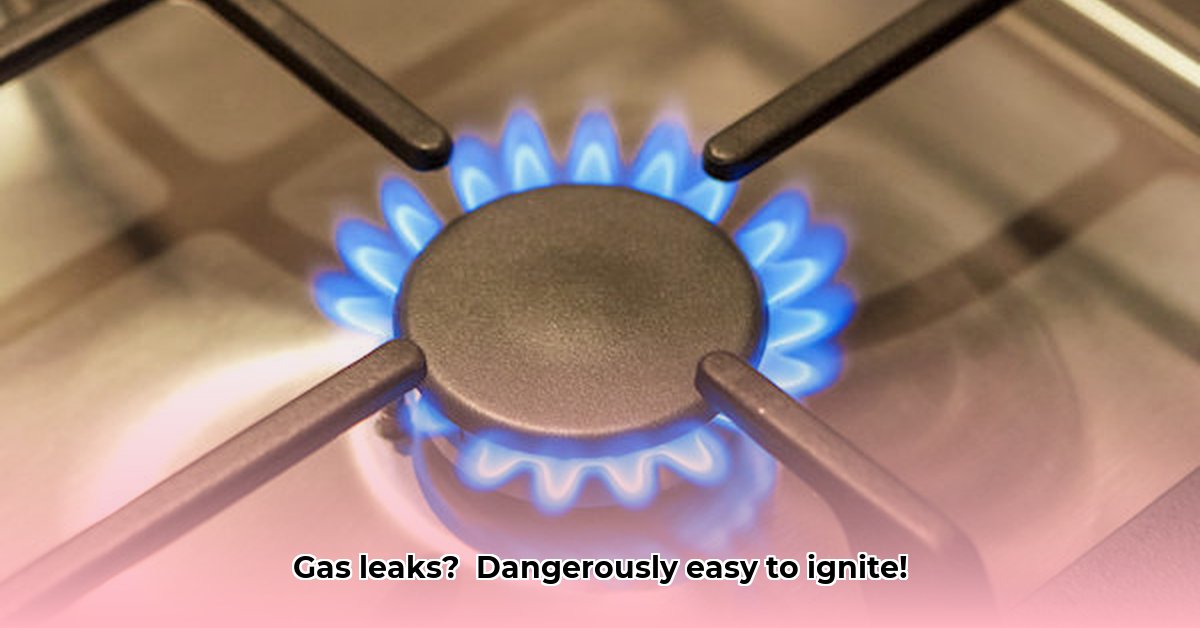
Understanding the Hidden Danger of Flammable Gases
Gas – it heats our water, cooks our food, and fuels our cars. But this invisible, often odourless force can be incredibly dangerous. The phrase "Schijnt Als Gas Gemakkelijk Te Ontvlammen" (Seems like gas ignites easily) highlights a very real threat. A tiny spark near an unseen gas leak can cause a serious accident.
Many common gases are highly flammable. Methane (in natural gas), propane (used in braais), and butane (in lighters) are examples. These gases are often invisible and odourless, increasing the danger. You might not even know there’s a leak until it’s too late. Isn't that a bit scary, hey?
Identifying Potential Hazards: A Closer Look
Several everyday gases ignite easily. The ignition temperature (the temperature at which a gas spontaneously ignites) varies. Oxygen is essential for combustion. Methane, propane, butane, hydrogen (used industrially and in some vehicles), and acetylene (used in welding) all burn readily with enough oxygen.
Here's a summary of common flammable gases and their approximate ignition temperatures:
| Gas | Chemical Formula | Approximate Ignition Temperature (°C) | Typical Uses |
|---|---|---|---|
| Methane | CH₄ | 538 | Natural gas (heating, cooking) |
| Propane | C₃H₈ | 450 | Braais, portable stoves, gas cylinders |
| Butane | C₄H₁₀ | 405 | Lighters, camping stoves, aerosol propellants |
| Hydrogen | H₂ | 572 | Industrial processes, fuel cells (emerging) |
| Acetylene | C₂H₂ | 305 | Welding, cutting |
Note: These are estimates and can vary.
Safety First: A Step-by-Step Guide to Gas Safety
Preventing accidents is key. Here’s a simple guide to minimise risks:
Regular Checks: Regularly check gas appliances for leaks using a soapy water solution (bubbles indicate a leak). Report leaks immediately. How often do you check your gas appliances?
Ventilation is Key: Ensure good ventilation where flammable gases are used or stored. Open windows and doors.
No Open Flames: Avoid open flames (matches, lighters) near gas appliances or suspected leaks. This is crucial, right?
Emergency Preparedness: Have a household or workplace emergency plan for gas leaks, including escape routes.
Call Professionals: If you suspect a leak, don't try to fix it yourself. Contact a qualified gas fitter or your supplier.
The Science Behind It All: How Gases Ignite
Gas ignition involves a series of chemical reactions. When a flammable gas mixes with enough oxygen and an ignition source provides the activation energy, rapid oxidation occurs. This releases heat and light (a flame or, in severe cases, an explosion). The energy released determines the severity.
Real-Life Impact: The Consequences of Neglecting Safety
Gas explosions have devastating consequences – property damage, serious injuries, and fatalities. The aftermath impacts communities, causing disruption and requiring extensive recovery efforts.
Staying Informed: Continuous Learning
Stay updated on gas safety regulations and best practices through your local gas supplier, government safety agencies, and reputable sources. Knowledge is power, especially when it comes to safety!
“Schijnt Als Gas Gemakkelijk Te Ontvlammen?” Yes, it does. But understanding the risks and following safety measures helps create a safer environment.